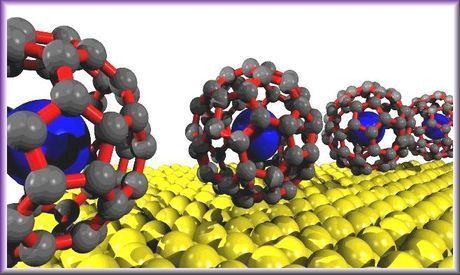Quantum Computers
Quantum computer technology involves the use of the quantum particle as a replacement for the bit of today’s computers. The theory for quantum computers began over 20 years ago with Paul Benioff, a physicist at the Argonne National Laboratory, who used the concept of the Turing machine as a model for the quantum computer. A Turing machine is composed of a tape of indefinite length that can be divided into evenly sized squares. A device capable of reading the blanks and symbols in the tape is used to give instructions to a machine so that a particular program can be performed.
Theory Underlying Quantum Computers
The quantum computer uses quantum particles as the “tape” in the Turing experiment. Because the presence of a symbol or a blank in the Turing tape symbolizes the binary digits, so can the state of the quantum particles be used to hold these values. The use of multiple quantum particles also means that the quantum computer will be much faster than the Turing machine since it can perform several calculations simultaneously.
Unlike today’s computers that uses the basic bit which has only two states (1 or 0), a quantum computer will store information as quantum bits which can hold more than two values. This ability of qubits to exist in more than two states means that a quantum computer has the capability of performing more than a million simultaneous computations at one time and the potential to be a lot faster and a lot more powerful than today’s supercomputers.

Quantum computers will also be able to utilize one other important characteristic of quantum particles known as entanglement. The property of entanglement makes it possible to assign and determine the value or the spin of a quantum particle by introducing an outside force.
The one thing to understand about a quantum computer is that it cannot do any function that a classical computer could not do. The classical example of this is the Church-Turing thesis. The one thing that a quantum computer does do, though, is increase the efficiency and the speed in which data can be found because the qubits can be so many different states at any single time.
Development of Quantum Computers
Although the quantum particle can be utilized to make computers, quantum computers are still far from becoming a reality and most of the research about them is theoretical. To date, researchers haven’t been able to manipulate more than 7 qubits in solving mathematical equations. There had been developments in this field, however, and the most remarkable of them are:
An experiment on August 2000 by researchers at IBM
Almaden center for research was able to make the nuclei of five fluorine atoms interact as qubits using magnetic resonance imaging and radio frequency pulses. This experiment proved successful in solving a complex mathematical problem called order finding (determining the period of a function) in one step. Today’s computers are able to solve the same problem only through repeated cycles.
Same year experiment at Los Alamos National Laboratory
Researchers were able to develop a 7-qubit quantum computer that utilizes NMR to influence particles in the nuclei of molecules in a trans crotonic fluid (fluid made up of four carbon atoms and 6 hydrogen atoms). The NMR was used to line up the particles though the application of electromagnetic pulses mimicking the bit information encoding process of digital computers.
Because of how beneficial quantum computing can be – despite the fact that it is still very much in its infancy – it has gained funding from numerous different national governments as well as the military of different countries. The primary reason for developing this research – at least for the governments and military – is because of security reasons.
In particular, the use of quantum computers for cryptanalysis – the study of encrypted information – allows for much more in depth and secure cryptography. This is beneficial because it can keep information safe from intrusion. Known as quantum cryptography, this study allows for communication to be made and then a key to be generated safely. However, what made it different from traditional cryptography was that it could sense if a third party was trying to eavesdrop.


Comments - 2 Responses to “Quantum Computers”
Sorry but comments are closed at this time.